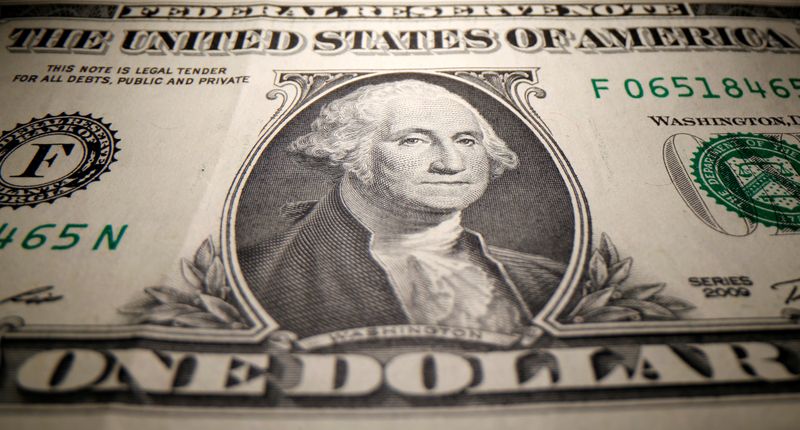By Ross Kerber and Karen Pierog
BOSTON/CHICAGO, August 3 (Reuters) - A decline in U.S. Treasury yields over recent weeks has investors eyeing the approach of an unusual phenomenon - the entire U.S. yield curve sinking below 1%.
Policymakers are looking to position the country to recover once the COVID-19 pandemic eases and allows the Fed to raise interest rates again. But those steps look a long way off as the virus continues to spread and talks on a new aid bill in Washington drag out.
"Everybody thinks the Fed is going to be running rates near zero indefinitely. That’s bringing down the 30-year bond yield to incredibly low rates," said Brian Bethune, chief economist for Alpha Economic Foresights LLC.
The 30-year U.S. Treasury (US30YT=RR), at around 1.25%, was still more than 25 basis points away as of Monday, rebounding from Friday when it touched its lowest since April.
Tradeweb noted last week that the decline in the 30-year yield meant that the entire yield curve was moving close to being sub 1%.
"I think the downward pressure on yields will continue for the foreseeable future," Nick Maroutsos, co-head of global bonds for Janus Henderson, who said that given where global yields trade outside the United States, "it’s only a matter of time before the entire U.S. curve trades below 1%."
Maroutsos said it was a "sign that investors are reaching for any yield they can get regardless of low it is."
The benchmark 10-year note (US10YT=RR) was most recently above 1% on March 20 and last week was near all-time closing lows. The 20-year bond slipped just below 1% on Thursday.
"These moves come as new data confirms a record economic decline in (the second quarter)," Tradeweb said in a research note.
On Thursday, the U.S. Commerce Department said U.S. gross domestic product declined at a 32.9% annualized rate last quarter, slightly less than expected but still the deepest decline in output since the government started keeping records in 1947.
Some analysts think that the Federal Reserve may shift more of its buying to the long end of the yield curve. That could put additional downward pressure on yields, Tradeweb said.
Falling below 1% across the whole curve would "be a sign of the times," after central banks "opened the monetary spigot, pressuring yields lower," said Gennadiy Goldberg, senior U.S. rates strategist at TD Securities, and would aid the economic recovery.
Still, he said a counterbalance to downward pressure on yields could be the expected upcoming stimulus and the Treasury's refunding announcement.
On Wednesday, the U.S. Treasury Department is due to release its quarterly refunding statement. At the last refunding, in May, it launched the long-planned 20 year bond. One question is whether the Treasury will continue to aggressively issue 30-year bonds as it did this spring, NatWest Markets wrote in a July 29 research note.
While the 30-year is not near record lows, it has fallen steadily from a recent peak of 1.48% on July 6. Only once before has the longest-term U.S. Treasury bond yielded less than 1%, during dramatic trading on March 9 as the extent of the public health crisis in the United States became clear - which meant that yields across the curve were then briefly sub 1%.
Bonds at the long end of the curve are sensitive to inflation risk, as higher prices erode purchasing power and returns. Current inflation stands well below the 2 percent target rate, said Fed Chair Jerome Powell on Wednesday, with the pandemic crushing demand. "I think fundamentally this is a disinflationary shock," he said.
Real yields, which adjust for inflation, have also been hitting record lows, with the yield on 10-year Treasury Inflation-Protected Securities (TIPS) (US10YTIP=RR) now more than negative 1%.
A yield curve entirely under 1% would likely reinforce many of the trends that have taken hold in the low-yield era of the last several years.
Low yields tend to pressure banks’ earnings by cutting into returns on both bond investments and fixed-rate loans. They also make the U.S. dollar - which recently hit its lowest level in more than two years against a basket of other currencies - less attractive to yield-seeking investors.
At the same time, low yields raise the allure of equities, in part by sending income-thirsty investors searching for higher yielding to equities. More broadly, they help companies by making it cheaper for them to borrow.
The slide in real yields reflects "ultra-easy monetary policy expectations and deteriorating macro conditions," said analysts at Bank of America (NYSE:BAC) in a recent note. Inflows into inflation protected bonds could mean some investors are pricing the risk of stagflation, said the bank.
